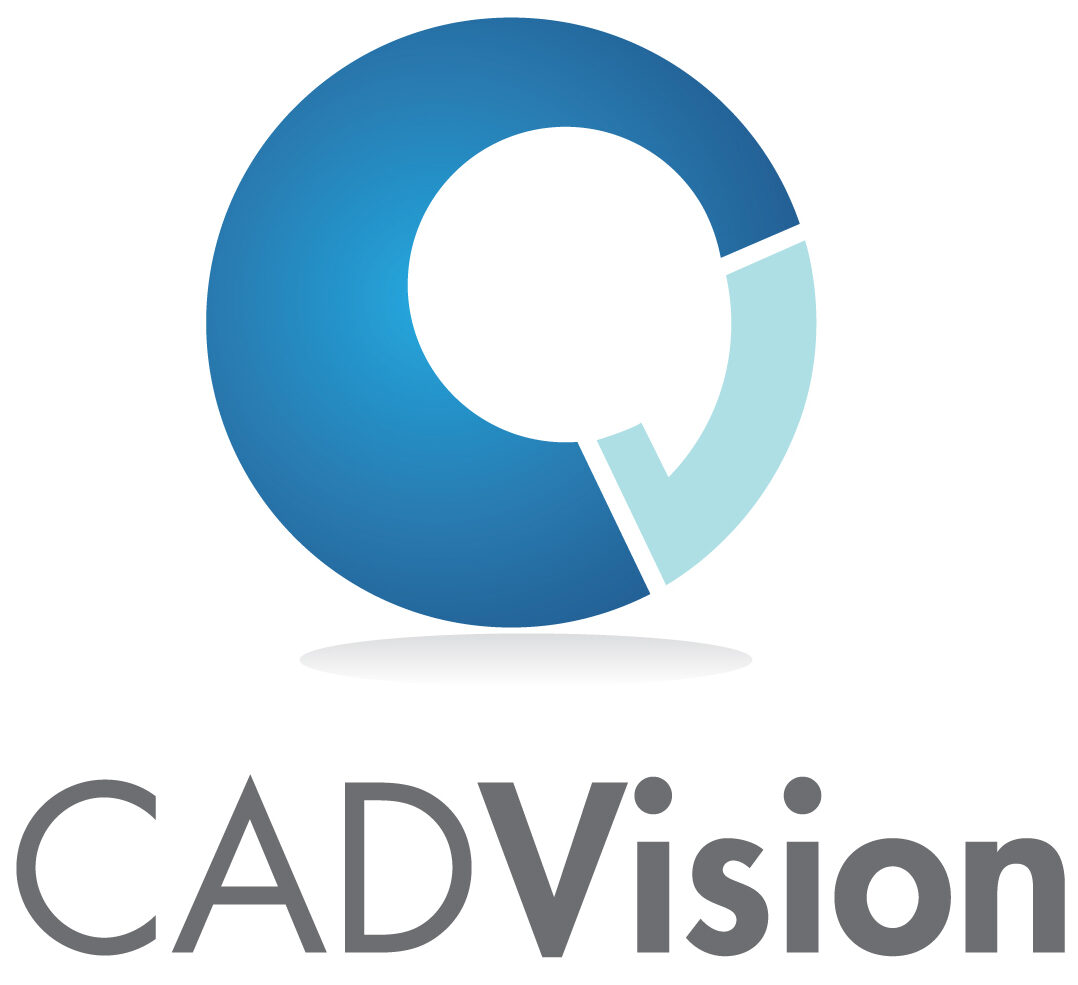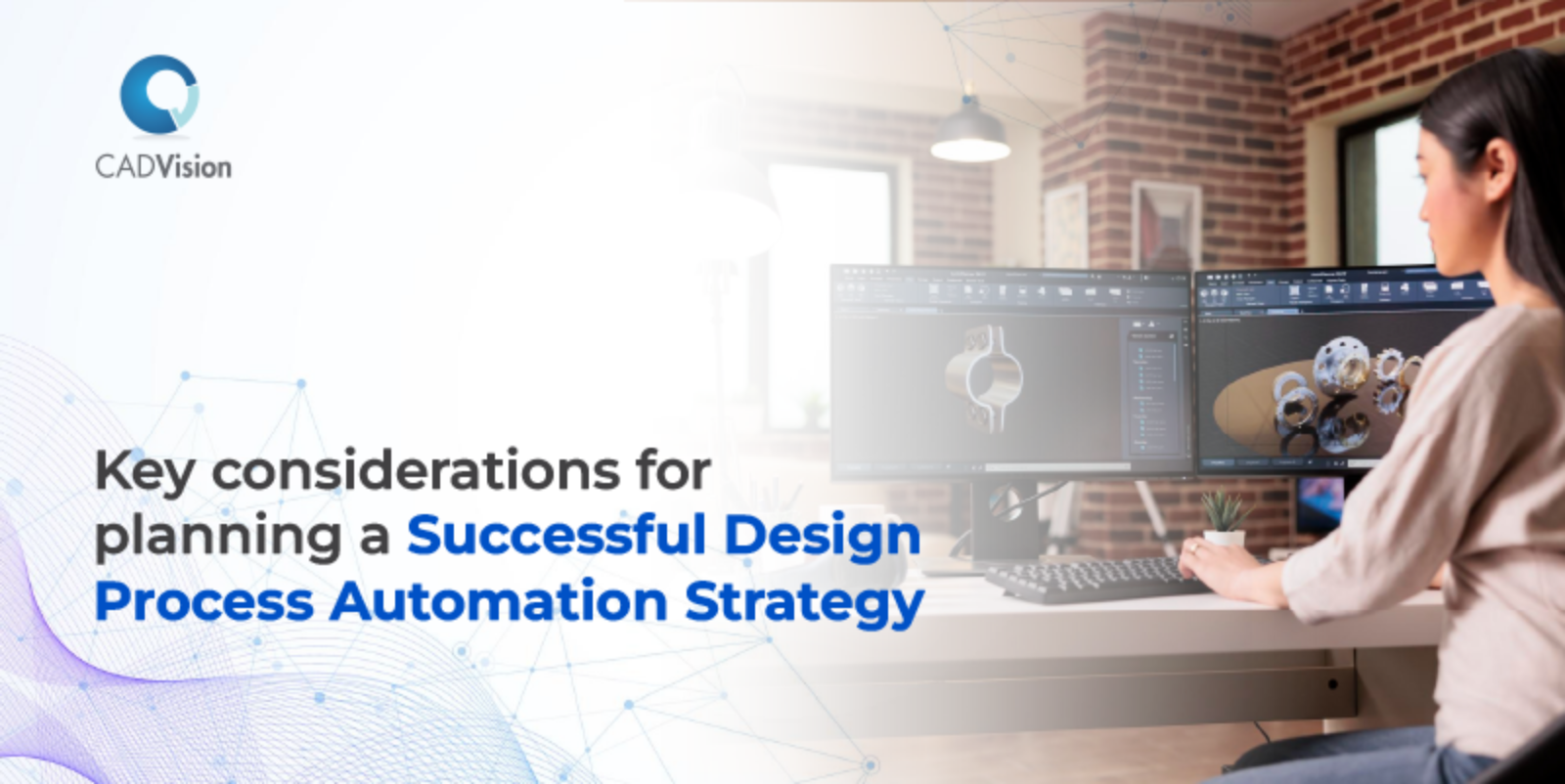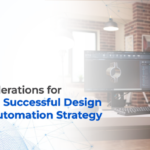Advanced computers and improved software have computerized and transformed design processes. This shift towards design automation, driven by sophisticated software tools and seamless data integration, has significantly improved the speed and accuracy of design processes.
As industries increasingly adopt automated design approaches, it’s crucial to navigate this balance thoughtfully. Developing an effective design process automation strategy requires a deep understanding of the benefits and challenges brought by automation and empowering designers while using this technology.
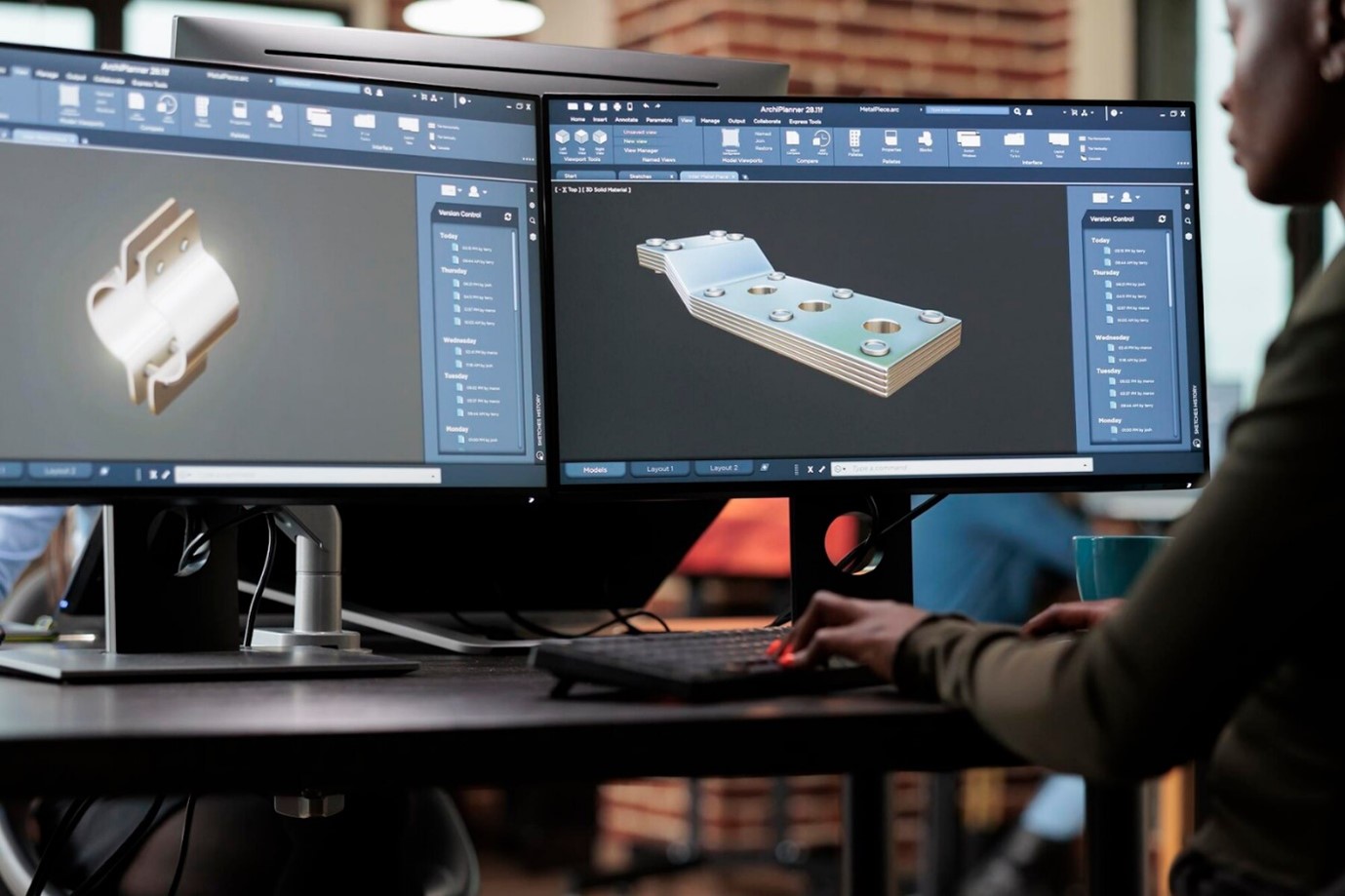
With this in mind, we can consider the benefits of using CAD in the field of design process and automation. Computer-aided design (CAD) is a pivotal process automation tool that can help seamlessly automate tasks, generate precise models, and streamline workflows for engineers and designers.
Integrating CAD ensures an effective strategy for process automation, delivering efficient, consistent designs at a faster pace without sacrificing quality or innovation. Let’s see how!
Role of CAD in Design Process Automation Strategy
Integrating computers in construction design, especially through mathematical modeling and CAD, offers an excellent opportunity to streamline and enhance design processes. Advanced software has evolved significantly, and with substantial engineering knowledge, it has paved the way for more efficient and precise design creation.
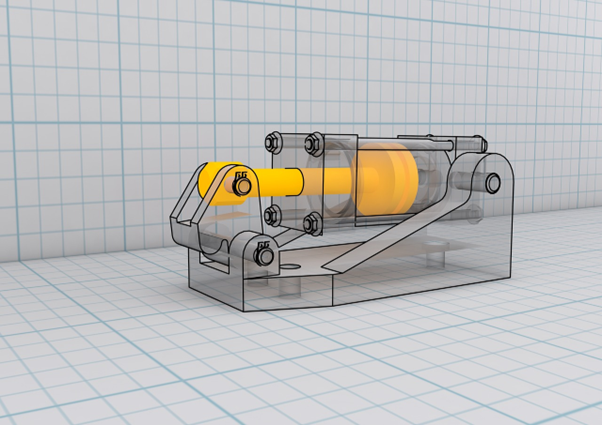
In particular, CAD systems for design process automation enable quick and accurate modeling, aiding designers in visualizing and refining concepts swiftly. This technological advancement empowers designers to make extensive use of sophisticated tools like robotic process automation software without in-depth training knowledge of intricate engineering calculations. CAD is pivotal in building an effective design process automation strategy that promises increased productivity and innovation.
Avail top-tier design process automation services, state-of-the-art software, utilities, and tools dedicated to engineering design.
Key Things to Consider Before Planning a Design Process Automation Strategy
Thorough planning of a design process automation strategy is crucial for modernizing design workflows efficiently. This strategy helps identify manual inefficiencies, integrates the latest tools, and enables design teams to focus on innovation.
By carefully planning automation, businesses improve productivity, align with goals, and drive innovation in design engineering. Let’s break down some of the key considerations for planning a successful strategy for process automation:
- Task identification: This involves identifying singular activities within the design process that are repetitive, rule-based, and prone to human errors. When automated, these tasks enhance efficiency and substantially reduce errors during the design process.
- Process analysis: Process analysis in design involves thoroughly examining the ongoing, time-consuming tasks that could be suitable for automation. Understanding the workflow is required to identify areas where automation can bring significant benefits, such as reducing manual effort and improving efficiency.
By analyzing each step, organizations can strategically implement automation in tasks that offer the most substantial enhancements to the design process.
- Envision the future process: Define what you aim to achieve with automation, considering the outcomes and benefits desired. Use insights from previous steps to spot opportunities and challenges.
Prioritize the most crucial aspects and design the workflow’s logic, rules, and actions required for automation. Tools like diagrams or prototypes can help visualize and test this design.
- Implementing automation: This step involves choosing appropriate tools and technologies aligned with your workflow design. This selection could involve scripts, macros, APIs, bots, or other user-friendly platforms, depending on the complexity of the automation in question.
Prioritize security measures to safeguard sensitive data, guarantee reliability in the automated processes, and ensure scalability as the automation expands or evolves. This meticulous implementation ensures a robust and efficient automated design process.
- Tracking and optimizing automation: This step involves using tools like dashboards or analytics to monitor how well the automated processes perform. These tools help track performance metrics like time, cost, quality, and customer satisfaction.
By comparing these metrics with initial benchmarks and expected outcomes, you can spot areas that need improvement. Most importantly, seek feedback from stakeholders, users, and customers to identify specific areas that could benefit from enhancements or modifications within the automated workflow.
This ongoing monitoring and optimization process ensures that the automation continuously aligns with the intended goals, making room for necessary improvements to maintain effectiveness and efficiency.
Process Design and Automation with RPA
For instance, in neurosurgery, which involves intricate, high-stakes procedures, CAD-driven simulations have been a blessing. Surgeons can now use virtual models to simulate complex brain surgeries, practicing complicated maneuvers and refining techniques before entering the operating room. This enhances the surgeon’s skill and confidence and contributes to better patient outcomes by minimizing the risk of complications.
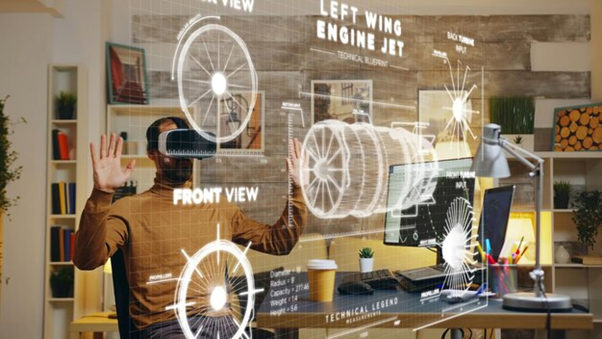
The report highlights that around 53% of the respondent organizations have started using RPA with plans to increase investments. If this trend continues, RPA might be adopted by almost everyone in the next five years.
Let’s highlight some key benefits of integrating RPA into the design process.
Key Benefits
Robotic Process Automation software significantly improves design processes by automating repetitive tasks like data entry and file organization. It expedites design validation and testing, ensuring faster validation cycles. Here are some additional key benefits:
- Reduction in manual errors: RPA eliminates manual errors, ensuring increased accuracy by automating repetitive tasks in design engineering processes.
- Focus on complex tasks: By handling mundane tasks, RPA allows design engineers to concentrate on intricate and creative aspects, driving innovation and efficiency.
- Swift task execution: RPA’s rapid execution accelerates design processes, enabling faster product development and delivery timelines.
- Enhanced customer satisfaction: Quicker processes and efficient delivery due to RPA contribute to improved customer satisfaction levels.
Conclusion
An effective strategy for design process automation relies heavily on integrating Computer-Aided Design (CAD) automation, distinguishing it from traditional physical design methods. Investing in automation technology offers both economic and performance advantages, resulting in quicker, more efficient designs and cost savings compared to manual approaches. Its contribution to qualitative improvements in design further emphasizes the importance of adopting automation in design processes.
CADVision, a leading provider of smart product engineering services, truly upholds this promise. Committed to delivering superior, scalable solutions, we specialize in pioneering product development, software innovation, process design, and automation. We are dedicated to providing optimized, cost-effective, and eco-friendly solutions that pave the way for enhanced efficiency and innovation.
Streamline your design process automation with CADVision
Popular Posts
- What Are the 5 Key Aspects of Medical Device Design?by Admin
- Latest Trends in Design Process Automationby Admin
- Generative AI Revolutionizing Medical Device Innovationby Admin
- How to Design & Develop Custom-Specific Implantsby Admin
- Key Considerations for Planning a Successful Design Process Automation Strategyby Admin
Categories
Tags
3D printing help in the medical field Automation in CAD data migration Business CAD customization services CAD data migration benefits CAD data migration methods CAD data migration planning CAD design automation CAD Design Automation In Medical Implants CAD development services CAD for Medical Device Design CAD Software CAD software development CAD software development companies CAD software solutions Capturing required knowledge Custom CAD data migration tools Custom tools for CAD data translation Data structuring in KBE Design process automation Engineering High-quality CAD data transfer Importance of medical device design IT-Services IT-Solution KBE KBE implementation issues Knowledge-Based Engineering challenges Marketing medical 3D printing Medical Design Software Medical device design Medical device design and development medical imaging software medical software development Neutral formats for CAD data conversion Patient-specific implants Process of CAD Automation Product Development Software Software development for medical devices Streamlined data migration process Successful CAD data migration What is automation design process? What is Design Process Automation
